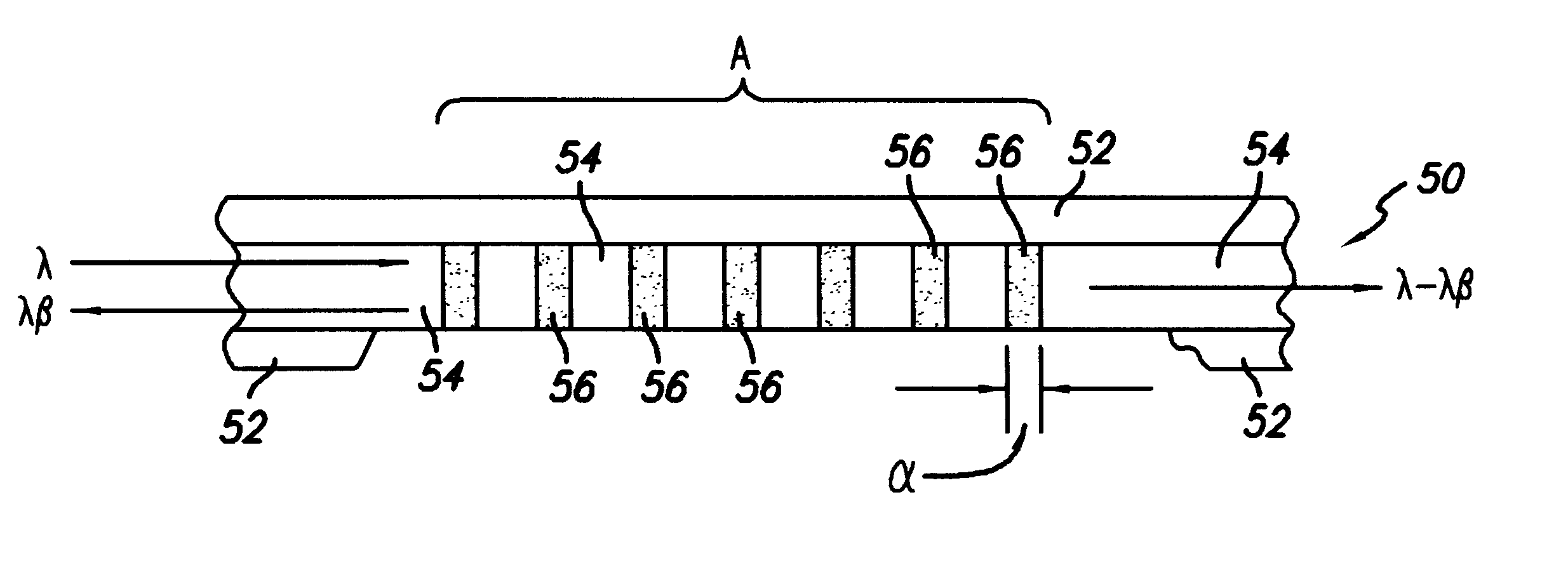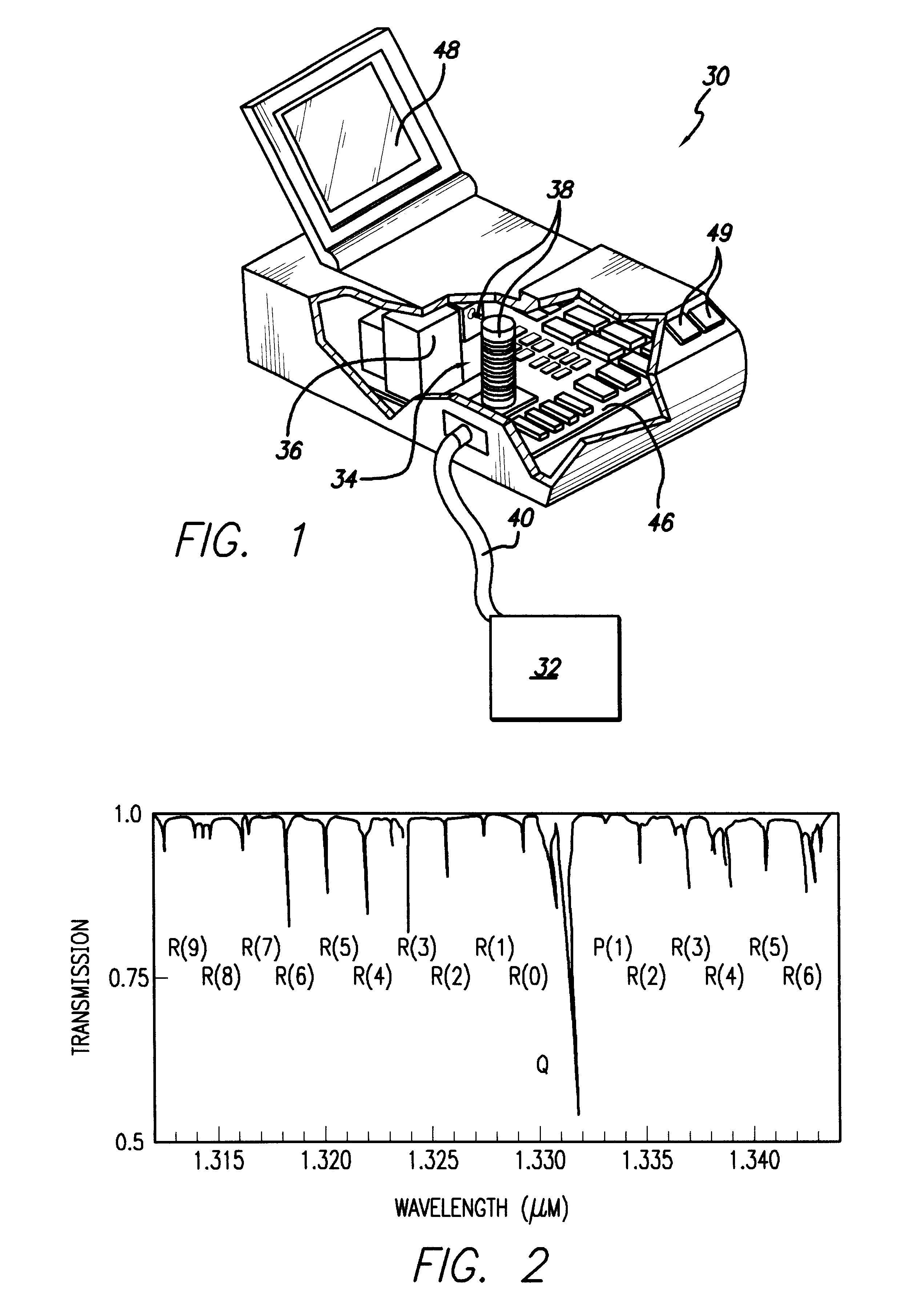Tunable filter
a filter and sensitivity technology, applied in the field of optical waveguides, can solve the problems of not being particularly versatile, known spectroscopic techniques are very sensitive to the conditions of the measurement environment, and unable to detect chemical substances in any environment, etc., and practitioners bear the burden of enormous expense and logistical difficulties in order to utilize these known methods
- Summary
- Abstract
- Description
- Claims
- Application Information
AI Technical Summary
Benefits of technology
Problems solved by technology
Method used
Image
Examples
Embodiment Construction
A. General Introduction
The present invention is generally directed to a tailored high-performance optical filter particularly suited for sensors and monitors used in correlation spectroscopy as well as other uses. In general, the invention is for a method of producing a reference spectrum that matches a selected substance. The invention is also for an artificial reference device or matched filter having refractive index variations that filter certain wavelengths of light energy passing through the filter to produce a reference spectrum having characteristic wavelengths that match an absorbance or target spectrum of a selected substance. The matched filter can be tuned or modulated to permit high-sensitivity measurements of target species and yet can be produced at relatively low cost, maintained very easily and safely, and produced in a very compact design. The tunable filter is useful in a number of different fields and is particularly useful for field testing using correlation spe...
PUM
| Property | Measurement | Unit |
|---|---|---|
| wavelength | aaaaa | aaaaa |
| modulation frequency | aaaaa | aaaaa |
| infrared wavelengths | aaaaa | aaaaa |
Abstract
Description
Claims
Application Information
 Login to View More
Login to View More - R&D
- Intellectual Property
- Life Sciences
- Materials
- Tech Scout
- Unparalleled Data Quality
- Higher Quality Content
- 60% Fewer Hallucinations
Browse by: Latest US Patents, China's latest patents, Technical Efficacy Thesaurus, Application Domain, Technology Topic, Popular Technical Reports.
© 2025 PatSnap. All rights reserved.Legal|Privacy policy|Modern Slavery Act Transparency Statement|Sitemap|About US| Contact US: help@patsnap.com



